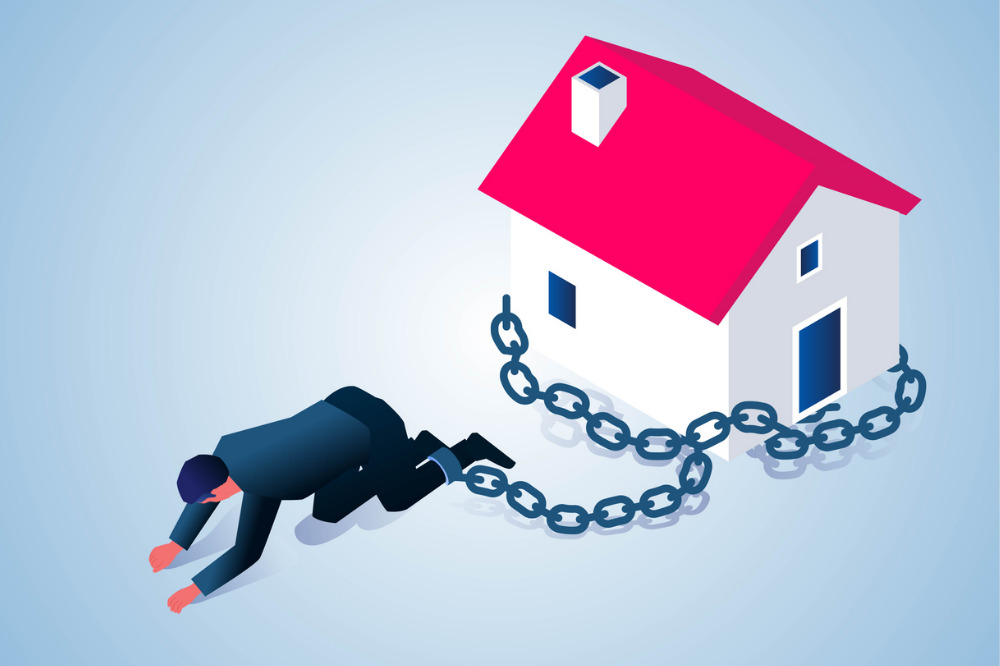A median-priced house in Sydney could plunge in value by a further $175,087 by the end of 2023, down to $1.1 million, NAB has forecasted.
RateCity.com.au’s analysis of NAB’s new property price forecasts showed that by the end of next year, the median Sydney house price could drop to $1,108,415 – the largest drop across all capital cities in dollar terms.
In Melbourne, the median house price is tipped to fall by $156,367 from now to $780,764 by the end of next year.
RateCity.com.au showed in the table below how far median house prices could fall by the end of 2023, based on CoreLogic’s adjusted median values, applying NAB’s property price forecasts.
|
City
|
Median house price (today)
|
Estimated house price (end 2023)
|
Difference to today $
|
Difference to today %
|
|---|---|---|---|---|
|
Sydney
|
$1,283,502
|
$1,108,415
|
-$175,087
|
-14%
|
|
Melbourne
|
$937,131
|
$780,764
|
-$156,367
|
-17%
|
|
Brisbane
|
$841,923
|
$733,484
|
-$108,439
|
-13%
|
|
Perth
|
$584,941
|
$493,111
|
-$91,830
|
-16%
|
|
Adelaide
|
$704,692
|
$583,864
|
-$120,828
|
-17%
|
|
Hobart
|
$761,368
|
$604,600
|
-$156,767
|
-21%
|
Note: NAB property price forecasts, CoreLogic index-adjusted median values, Dec. 31, 2021 and Sept. 31, 2022. Assumes house prices fall in line with dwelling forecasts.
Falling property prices could push some borrowers into the so-called “mortgage prison,” where they are unable to refinance. Most people who get caught up in this situation were those who borrowed at the peak of house prices in their area, with small deposits, such as first-home buyers.
If NAB property price forecasts are realised (LVR of 105%), someone who had purchased a median-priced house in Sydney in June 2021 with a 5% deposit could owe the bank 5% more than their home is worth by the end of 2023, RateCity.com.au analysis showed.
But if that person bought their house with a 20% deposit, they would own just 11% of the property by the end of next year – rendering them in mortgage prison, unless they pay lenders mortgage insurance (or have it waived), the analysis showed.
Borrowers in Melbourne could find themselves in a similar position. Someone who bought a median-priced house in June 2021, with a 5% deposit, could owe the bank 10% more than their home is worth by the end of next year (LVR of 110%).
“Australia’s property market could be in for a bumpy ride over the next year if NAB’s new forecasts are realised,” said Sally Tindall, RateCity.com.au research director. “Every time the RBA hikes rates, the maximum amount people can borrow from the bank takes a hit, and with a number of rate hikes potentially waiting in the wings, the drops in property prices are likely to continue. While some buyers’ budgets are shrinking, other buyers are tapping out altogether, in the hope of finding a cheaper deal down the track. In the boom, a ‘fear of missing out’ drove property prices higher. Now a ‘fear of getting in’, is having the reverse effect.
Tindall said that while falling property prices are typically good news for would-be first-home buyers, “with interest rates still on the rise, it’s not going to be a walk in the park.”
“They’ll be paying more in interest for the money they borrow against what is an uncertain backdrop,” she said.
For those who have bought at the peak, Tindall’s advice was to “put the property news pages in the bottom drawer and focus on paying down their debt.”
“Borrowers who can’t refinance their loan because of their equity position should still negotiate with their lender for a better rate,” she said. “This will help them make their monthly repayments, and potentially extra so they can break out of mortgage prison faster.”


